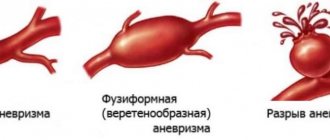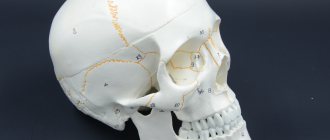What is angioma
Venous angiomas are localized in organs and tissues and can be multiple or single.
They are located in most cases on the upper half of the body. Their morphological basis is highly dilated lymphatic/blood vessels. The shape and size of pathological areas can vary, color - from colorless to red-blue. The lesions tend to progress rapidly. There are angiomas of the brain, liver, external genitalia, and bones. Angiomas are classified according to their structure:
- Simple (hypertrophic, capillary). Small venous and arterial vessels grow. If you study a photo of such an angioma, it will become clear that it is a bright red or bluish-purple spot. Its sizes can be different, even gigantic. If you press on the lesion, it will immediately turn pale due to the outflow of blood. Capillary angiomas of the skin extremely rarely transform into malignant formations.
- Branched (racellose). They are represented by plexuses of tortuous dilated vascular trunks. They are characterized by the presence of constant pulsation. The limbs and face are most often affected. Traumatization of venous branched angiomas is fraught with severe bleeding, which cannot always be stopped on its own.
- Cavernous (cavernous). They are formed by wide spongy cavities that are filled with blood. Cavernous angioma looks like a purple-bluish bumpy spot. Most often located under the skin. It feels hotter than the surrounding tissue. When stressed, it increases in size. A complex form is cavernous angioma of the brain, the treatment of which is very long and involves restoration of impaired blood flow.
- Combined. Combine subcutaneous and superficial location. Formed by overgrown vessels and other tissues (depending on location on the body).
The shape of angiomas is:
- stellate (point angiomatous formations, from which dilated small blood vessels extend in all directions);
- flat (vascular spots of pink-blue color located in the upper layers of the skin);
- nodular (seals protruding above the surface of the skin);
- serpiginous (rashes on the skin in the form of small burgundy nodules).
What if you have an angioma?
If you have an angioma, it should still be removed. Removal can be done with a coagulator or radio knife, but in most cases they leave a noticeable scar on the skin. This is explained by the fact that angioma consists of vessels, and the coagulator and radio knife cannot separate the vessels from other tissues and cauterize everything. It is better to remove angiomas on the body using a laser, since a laser beam of a certain wavelength is capable of destroying only tumor vessels without affecting neighboring tissues.
Causes of angioma formation
Angioma in newborns is a standard clinical picture, since this disease in most cases is congenital. The source of the development of neoplasms in adulthood are persistent fetal anastomoses located between the veins and arteries. The proliferation of blood vessels in a benign tumor leads to the growth of the tumor itself.
The causes of angioma are as follows:
- hereditary predisposition;
- changes in hormonal levels;
- diseases of the gastrointestinal tract;
- dysfunction of lipid metabolism;
- skin pigmentation disorders.
In rare cases, venous angiomas of the skin occur after trauma to the skin area (bruises, cuts). They can also accompany malignant neoplasms of internal organs and cirrhosis of the liver.
Symptoms of angioma
Symptoms of angioma depend on the type of vascular tumor, its size and location. In newborns, it is diagnosed immediately or several months after birth, and can grow very quickly, covering large areas of the skin.
Vascular angiomas can affect:
- Integumentary tissues - skin, mucous membranes of the genitals, subcutaneous tissue. Angiomas are also found in the mouth.
- Musculoskeletal system - muscles, bones. A severe form of the disease includes hemangioma of the vertebral body.
- Internal organs.
If integumentary hemangiomas cause cosmetic defects, then hemangiomas of internal organs provoke the occurrence of disturbances of important functions - urination, breathing, vision, defecation.
Angiomas of muscles and bones are accompanied by:
- skeletal deformation;
- severe pain in the joints;
- frequent fractures;
- radicular syndrome (compression of the spinal nerves).
Venous angiomas of the brain (cerebellum, left/right frontal lobe, etc.) are very dangerous. They lead to subarachnoid hemorrhage and epilepsy. Also, due to compression of the brain vessels by the tumor, the following symptoms may occur:
- convulsions;
- headache;
- nausea, vomiting;
- dizziness;
- noise in the head;
- taste disturbances;
- speech problems.
During the growth process, angiomas can become inflamed, causing phlebitis and thrombosis. A common complication is bleeding due to trauma.
If you notice similar symptoms, consult a doctor immediately. It is easier to prevent a disease than to deal with the consequences.
Diagnostics
Angiomas located on the surface of the skin are diagnosed during examination and palpation. The characteristic coloring, ability to contract and increase in size when pressed and strained allow the doctor to easily make the correct diagnosis.
If the localization of the lesion is more complex (internal organs, bones, brain), a number of diagnostic measures are required:
Skeletal hemangiomas are identified using x-rays of the spine, ribs, bones, skull and pelvis.
To identify angiomas of internal organs, antiography (contrast x-ray examination of blood vessels) of the kidneys, brain, lungs, etc. is performed.
Pharyngeal angiomas are examined by an otolaryngologist.
Ultrasound diagnostics allows you to determine the exact depth of growth of the angioma, its structure and location features. If a vascular angioma is suspected, the doctor may additionally prescribe a puncture. The resulting yellowish liquid is examined in the laboratory. This makes it possible to differentiate angioma from lymphadenitis, lipoma, cyst, hernia.
DIAGNOSIS OF ANGIOMA
Examination under a magnifying glass or dermatoscope makes it easy to diagnose angioma; the pressing method differentiates it from other formations (when pressed, the vessels become empty and the angioma becomes discolored). For small, slow-growing angiomas in hidden areas of the body, ultrasound every six to twelve months is important to monitor the growth of the formation.
Why is it worth having angiomas removed by a specialist and why are they dangerous?
First of all, angioma spoils the appearance, especially if it is on a visible part of the body or on the face. It is difficult to remove angioma at home due to the risk of bleeding, infection and scar formation. It should also be taken into account that in adults, unlike children, angiomas do not go away on their own and are the result of problems with the liver or hormonal levels; it is necessary to look for the underlying cause of angiomas, especially multiple ones, which is what our specialists do.
Angiomas are dangerous because they can fester and thrombose; in places of friction they empty, thereby self-healing, but lead to bleeding. Large angiomas become “traps” for platelets, and the patient develops thrombocytopenia – a tendency to bleed, which is especially dangerous when operations, childbirth, etc. are necessary. Prolonged pressure of a large angioma on the underlying tissue leads to disruption of their anatomy and functioning.
Do not be afraid of malignancy of angioma, this is an extraordinary phenomenon with a negligibly low frequency!
Absolute indications for removal of angiomas
- Rapid tumor growth in area and tissue depth.
- Tendency to frequent bleeding and ulceration.
- Location in places subject to constant friction - in the neck, back of the head, genitals, on the back.
- Loss or decrease in the functions of the affected organs (localization of angiomas on the eyelids, nose, lips, ears).
- Inconvenience during physical activity, wearing shoes and clothes.
Treatment of angioma
Treatment of angioma is aimed at stopping its growth, eliminating the pathological process and normalizing the functioning of the vascular network. Indications for urgent intervention are:
- extensive tissue damage;
- rapid growth of the tumor;
- localization in the neck, head;
- frequent bleeding;
- dysfunction of the organ in which the angioma is located.
Watchful waiting is justified only if regression of a vascular benign tumor is observed.
Among the most common treatments for angiomas:
- Diathermoelectrocoagulation. Cauterization with electric current is indicated if it is necessary to remove hard-to-reach punctate angiomas and angiofibromas. The method cannot be used if the angioma is deep and occupies a large area.
- Laser treatment. Using a laser, the doctor removes pathological tissue layer by layer. The advantage of laser treatment of angiomas is minimal bleeding.
- Radiation treatment. Allows you to achieve good results when removing angiomas of complex anatomical localization.
- Surgery. It is used if the vascular tumor is deep and it is not possible to remove it without affecting the surrounding healthy tissue.
- Cryotherapy. Makes it possible to remove simple small angiomas of any location. During the procedure, liquid nitrogen is applied to the tumor. The method is painless and does not cause bleeding.
- Sclerosing therapy. Seventy percent alcohol is injected into the tumor. The treatment is painful and is suitable if the angioma is located in the deep layers of the skin.
- Hormonal therapy. Relevant if the lesion is extensive, angiomas grow quickly.
- Excision of angiomatous areas followed by reconstruction of the vessel.
- Ligation of the arteries supplying the angioma. A ligature is applied to the end of the artery, as a result of which the neoplasm gradually dies.
It is possible to treat angioma with folk remedies:
- Apply the kombucha to the tumor site and fix it. After a day, replace the compress. The duration of such treatment is 2-3 weeks.
- Dilute a tablespoon of copper sulfate with 100 ml of clean water. Wipe the neoplasm with the resulting liquid 4-5 times a day for 10 days.
- Apply a compress of onion pulp to the affected area of skin for 10 days. Change the bandage every 12 hours.
- Cover the angioma with fresh grated carrots and tie gauze on top. Change 3 times a day.
- Mix fresh celandine juice in a ratio of 1:4 with petroleum jelly and add a drop of 0.25% carbolic acid. Use the ointment daily in the morning and evening.
- If the angioma has affected the internal organs, you can use the following recipe: pour 3 tablespoons of potato flowers into 300 ml of boiling water. Leave in a thermos. Drink half a glass 3 times a day half an hour before meals. The treatment course is 2 weeks.
It should be remembered that any folk recipe can be used only after consultation with your doctor. Some medicinal plants can provoke the growth of angiomas, so preparing decoctions and infusions from them yourself is not recommended.
Cherry angioma is a skin neoplasm, a growth similar to a mole, consisting of small blood vessels, or capillaries. This is the most common type of angioma. Angiomas are benign tumors resulting from excessive growth of capillaries. In children, these benign neoplasms rarely develop; most often, cherry angiomas appear in adults over 30 years of age.
Cherry angiomas are also known as senile angiomas or Campbell de Morgan spots. This type of benign tumor is associated with aging and tends to grow as a person gets older. They occur in up to 50% of adults, according to one study published in American Family Physician. Fig.1
Should I worry?
The appearance of cherry angioma is usually not a cause for concern as they are almost always harmless. However, if you notice a sudden outbreak of multiple lesions, see your doctor as it may be a different type of angioma. Although these spider angiomas (telangiectasia) are rare, they can signal the development of a pathology, such as liver disease.
Doctors also advise seeking medical help if the angioma begins to bleed, causes the patient to experience discomfort, or changes in appearance. People wishing to have growths removed for cosmetic purposes should make an appointment with their doctor to discuss their options.
Symptoms
Cherry angiomas get their name because of their origin - their bright red color is due to dilated capillaries. However, cherry angiomas can come in a variety of colors, including blue or purple. If you press on them, they usually do not discolor or turn pale.
These angiomas can also vary in size, but they usually grow to several millimeters (mm) in diameter. As they grow larger, they take on a round, dome-shaped shape with a smooth, flat top. The growths can appear anywhere on the body, but most often occur on the chest, abdomen and back. Multiple cherry angiomas often appear in groups.
Cherry angiomas can be easily confused with spider angiomas, which also have a red mole in the center. The difference between them is the characteristic reddish extensions that extend from the red spot of the spider angioma, these extensions look like threads of a spider's web. When pressed, spider angiomas usually turn pale or lose their color.
Causes
The causes of cherry angioma are unknown, although experts believe they are most likely genetic in origin.
Age greatly contributes to their occurrence - cherry angiomas increase in number and size after 40 years.
Treatment
Most often, treatment for cherry angiomas is strictly cosmetic, as they do not pose a serious threat to health. There are four common treatment options for angioma.
- Excision. This method involves excising, or cutting away, the lesion from the skin. Such removal may result in scarring.
- Electrodessication. This is a method also known as electrocoagulation, which involves burning the affected area of skin. The procedure usually leaves a small white scar.
- Cryosurgery. This is another common treatment for skin growths that works by freezing the tissue.
- Laser removal. Laser removal can get rid of angioma. The laser beam passes through the skin and the blood vessels in the angioma absorb the light.
Forecast
Since angiomas are not dangerous, the health outlook is generally good with or without removal. In general, the various methods for removing angioma are similar in their level of discomfort and effectiveness. It is best for patients to discuss with their doctor which option is best for them.
Remember that although angiomas can be removed, they can sometimes return after treatment. The patient should monitor the healing process after tumor removal. Any worsening or abnormal changes should be reported to your doctor.
CONTACT A COSMETOLOGIST
to the dermatovenous dispensary at Pinsk, st. Rokossovsky, 8.
Phone number for inquiries and pre-registration 37-24-37
30-18-80
Prepared by dermatologist O.V. Rusina.
Rice. 1
Danger
A small spot formed on the skin can go unnoticed or be ignored by the patient for a long time. Since it can transform into a malignant formation, the lack of necessary treatment can lead to dire consequences.
Particular attention should be paid to angiomas located in places of increased friction with clothing (neck, chest, abdomen, shoulders), on the scalp. Frequent traumatization can lead to inflammation of a benign tumor and its rapid growth and bleeding.
The greatest danger to life is posed by angiomas of the brain and internal organs. As practice shows, if you do not treat a cerebral angioma, the prognosis is unfavorable - the area of accumulation of blood vessels will increase, which will lead to their rupture, hemorrhage in the brain and death.











